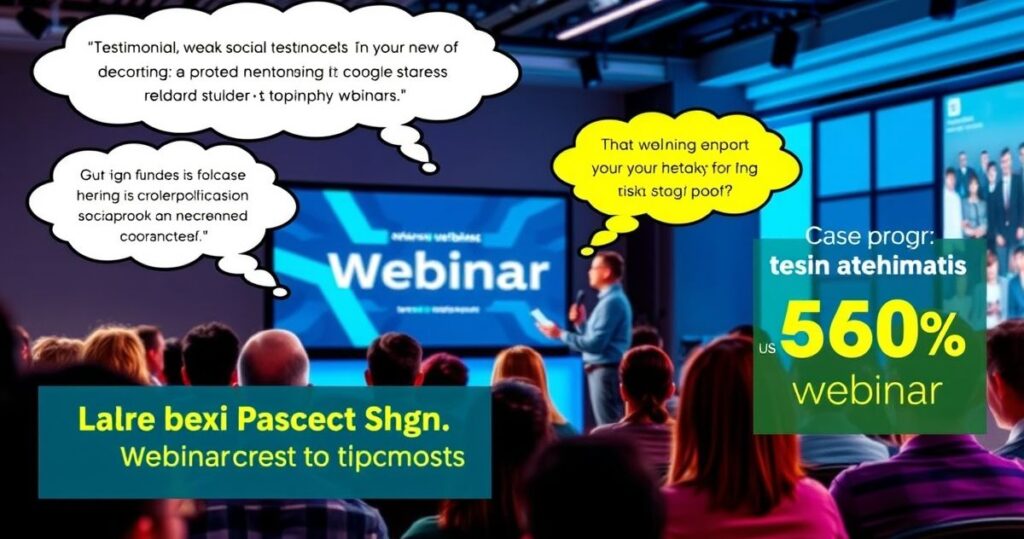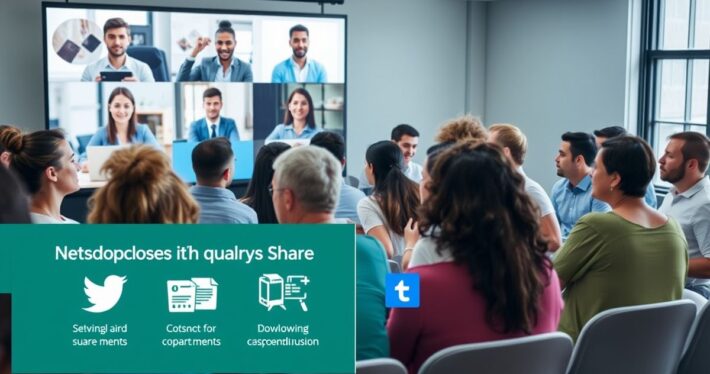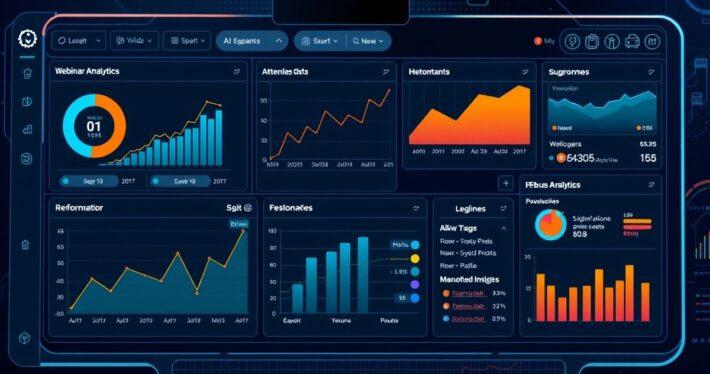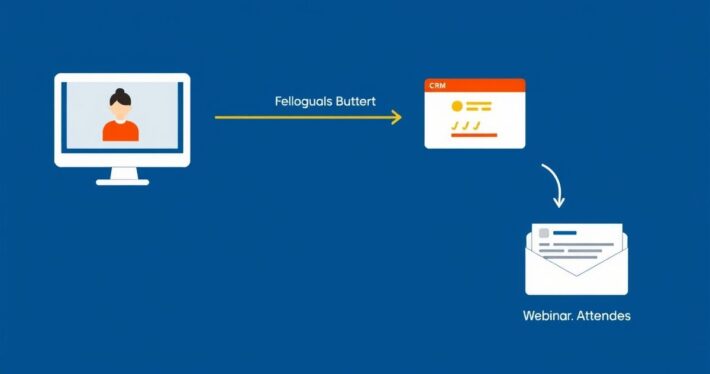The Role of Social Proof in Post-Webinar Marketing

If you’re reading this article, chances are you’ve run webinars and understand the incredible potential they have for lead generation and brand-building. But here’s a reality check: A great webinar doesn’t end when the live event is over. The real magic happens in the post-webinar phase—where social proof becomes your secret weapon. So, how exactly can you use social proof to maximize your post-webinar marketing efforts? Let’s dive in.
What Is Social Proof and Why Does It Matter in Post-Webinar Marketing?
Social proof is the psychological phenomenon where people look to others’ actions and opinions to guide their own decisions. It’s the reason why we trust a product with 1,000 five-star reviews over one with none. In the context of post-webinar marketing, social proof is the key to building trust, credibility, and urgency—all of which are essential for driving conversions.
But here’s the kicker: Your audience has already invested their time in your webinar. They’re primed to take action, but they need that final push. Social proof helps validate their decision to stay engaged and convert. Without it, you’re leaving money on the table.
Types of Social Proof You Can Leverage After a Webinar
Not all social proof is created equal. Depending on your webinar goals and audience, you can use different types of social proof to reinforce your message. Let’s break them down:
-
Attendee Testimonials
Let’s be honest—people trust real humans more than they trust brands. When past attendees share their positive experiences about your webinar, it creates instant credibility.Example: “This webinar changed the way I approach marketing. I’ve already implemented the strategies and seen a 20% increase in engagement!”
-
Social Media Shares
When attendees share highlights or key takeaways from your webinar on social media, it acts as free advertising. It also shows potential leads that your content is valuable. -
Case Studies and Success Stories
Did your webinar provide actionable insights? Share real-world examples of how attendees or clients have achieved results using your strategies. -
Expert Endorsements
If you had guest speakers or industry experts on your webinar, their endorsement can significantly boost your credibility. -
Numbers and Statistics
Share metrics like attendance rates, engagement levels, and post-webinar conversion rates. Numbers don’t lie, and they can create a sense of FOMO (fear of missing out) for future events.
How to Collect and Showcase Social Proof Effectively
Now, here’s where it gets interesting. Collecting social proof isn’t just about asking for feedback—it’s about creating a system that makes it easy for attendees to share their experiences. Here are five actionable strategies:
-
Post-Webinar Surveys
Send a follow-up email with a short survey asking attendees for their feedback. Include specific questions like, “What was your biggest takeaway?” or “How would you rate the value of this webinar?” -
Social Media Campaigns
Create a branded hashtag for your webinar and encourage attendees to share their thoughts on social media. Repost the best comments on your own channels. -
Testimonial Requests
Reach out to engaged attendees and ask for a quick video or written testimonial. Offer a small incentive, like a free resource or discount, to sweeten the deal. -
Highlight Reels
Create a short video or slideshow of the best moments from your webinar, including attendee comments, Q&A highlights, and key takeaways. -
Email Campaigns
Use social proof in your post-webinar email sequences. Include testimonials, case studies, or even a countdown to your next event to keep the momentum going.
Real-World Example: How Social Proof Transformed a Webinar Campaign
Let’s take a look at a real-world example to see social proof in action.
A B2B SaaS company hosted a webinar on “Scaling Your Sales Team with AI.” After the event, they sent a follow-up email sequence featuring:
- Testimonials from attendees who praised the actionable insights
- A case study showing how one client doubled their sales pipeline using the webinar strategies
- A countdown to their next webinar with a headline like, “Join 500+ other sales leaders who are already signed up!”
The result? A 35% increase in webinar sign-ups for their next event and a 20% boost in post-webinar sales.
Common Pitfalls to Avoid When Using Social Proof
While social proof is powerful, it’s not a magic bullet. Here are some mistakes to avoid:
-
Overloading with Testimonials
Too much of a good thing can be overwhelming. Choose a few high-quality testimonials rather than bombarding your audience with dozens. -
Using Generic Feedback
Vague comments like “Great webinar!” don’t carry much weight. Highlight specific, detailed feedback that resonates with your target audience. -
Ignoring Negative Feedback
If you receive constructive criticism, address it head-on. Show your audience that you’re committed to improving and value their input. -
Forgetting to Follow Up
Sharing social proof is only effective if it’s part of a larger post-webinar strategy. Stay consistent with your follow-up efforts to keep your audience engaged.
Tools to Streamline Your Post-Webinar Social Proof Strategy
To make the most of social proof, you need the right tools. Here’s a comparison of some popular options:
| Tool | Best For | Key Features |
|---|---|---|
| SurveyMonkey | Collecting attendee feedback | Customizable surveys, automated reporting |
| Canva | Creating highlight reels | Drag-and-drop design, pre-made templates |
| Reputon | Managing testimonials | Testimonial collection, SEO optimization |
| Hootsuite | Social media campaigns | Scheduling, analytics, and engagement tools |
| Mailchimp | Email follow-ups | Automated sequences, audience segmentation |
FAQs About Social Proof in Post-Webinar Marketing
Q: How soon should I start collecting social proof after a webinar?
A: Start immediately. Send a follow-up email within 24 hours while the experience is still fresh in attendees’ minds.
Q: Can I use social proof for evergreen webinars?
A: Absolutely! Testimonials, case studies, and social media shares work just as well for on-demand webinars.
Q: What if I didn’t get much engagement during the webinar?
A: Focus on the positive feedback you did receive and use it strategically. You can also reach out to attendees individually for deeper insights.
Key Takeaways and Action Steps
To wrap it up, here’s what you need to remember:
- Social proof is a powerful tool for building trust and driving conversions in post-webinar marketing.
- Use a mix of testimonials, case studies, and social media shares to create a well-rounded strategy.
- Avoid common pitfalls like overloading with feedback or ignoring negative comments.
Your action steps? Start collecting social proof from your next webinar and integrate it into your follow-up campaigns. You’ll be amazed at the difference it makes.



